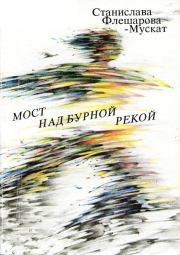Orlando Figes - The Story of Russia
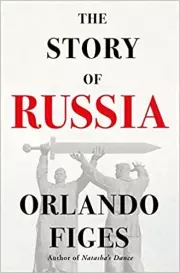 | Название: | The Story of Russia |
Автор: | Orlando Figes | |
Жанр: | Старинная литература | |
Изадано в серии: | неизвестно | |
Издательство: | неизвестно | |
Год издания: | 2022 | |
ISBN: | неизвестно | |
Отзывы: | Комментировать | |
Рейтинг: | ||
Поделись книгой с друзьями! Помощь сайту: донат на оплату сервера | ||
Краткое содержание книги "The Story of Russia"
“This is the essential backstory, the history book that you need if you want to understand modern Russia and its wars with Ukraine, with its neighbors, with America, and with the West.” ―Anne Applebaum, author of Twilight of Democracy and Red Famine Named a Most Anticipated Book of the Year by Publishers Weekly and Kirkus Reviews From “the great storyteller of Russian history” (Financial Times), a brilliant account of the national mythologies and imperial ideologies that have shaped Russia’s past and politics―essential reading for understanding the country today The Story of Russia is a fresh approach to the thousand years of Russia’s history, concerned as much with the ideas that have shaped how Russians think about their past as it is with the events and personalities comprising it. No other country has reimagined its own story so often, in a perpetual effort to stay in step with the shifts of ruling ideologies. From the founding of Kievan Rus in the first millennium to Putin’s war against Ukraine, Orlando Figes explores the ideas that have guided Russia’s actions throughout its long and troubled existence. Whether he's describing the crowning of Ivan the Terrible in a candlelit cathedral or the dramatic upheaval of the peasant revolution, he reveals the impulses, often unappreciated or misunderstood by foreigners, that have driven Russian history: the medieval myth of Mother Russia’s holy mission to the world; the imperial tendency toward autocratic rule; the popular belief in a paternal tsar dispensing truth and justice; the cult of sacrifice rooted in the idea of the “Russian soul”; and always, the nationalist myth of Russia’s unjust treatment by the West. How the Russians came to tell their story and to revise it so often as they went along is not only a vital aspect of their history; it is also our best means of understanding how the country thinks and acts today. Based on a lifetime of scholarship and enthrallingly written, The Story of Russia is quintessential Figes: sweeping, revelatory, and masterful.
Читаем онлайн "The Story of Russia". [Страница - 100]
Warsaw Pact countries here, here
White (anti-Bolshevik) army here, here, here, here
White Sea Canal (Belomorkanal) here
Wilhelm II, Kaiser here, here
Witte, Count Sergei here, here
Władisław IV Vasa, king of Poland here
Władysław, Prince here
women here, here, here, here; serf here, here
Women’s Battalion of Death here
Workers’ Opposition here, here, here, here
World Wars: First here, here, here, here, here, here, here, here, here, here; Second here, here, here, here, here, here, here, here
Wrangel, General Petr here
Writers’ Union here
Yagoda, Genrikh here, here
Yaik Host here
Yakir, General Iona here
Yakovlev, Alexander here, here, here
Yakuts, the here
Yakutsk, Siberia here
Yaik Cossacks here
Yanaev, Gennady here, here
Yanukovich, Viktor here, here, here
Yaroslav, Prince here
Yeltsin, Boris here, here, here, here, here, here, here, here, here, here, here, here
Yezhov, Nikolai here, here
Yudenich, General Nikolai here
Yukos (oil company) here, here
Yuri Vasilievich of Uglich here
Yushchenko, Viktor here
Yusupov, Felix here
Zaporozhian Host, the here, here
Zelensky, Volodymyr, President of Ukraine here, here, here, here
Zemgor (network of public bodies) here
zemstvos (rural councils) here, here, here, here
Zhdanov, Andrei here, here, here
Zhukov, General Georgy here, here
Zinoviev, Grigory here, here, here, here, here
‘Zinoviev Letter’ here
Zoshchenko, Mikhail here
Zosima (monk) here
Zubov, Alexei: The Ceremonial Entry of the Russian Troops to Moscow … after … the Battle of Poltava here
Zvenigorod here
Zvezda (journal) here
Zyuganov, Gennady here
Acknowledgements
I would like to thank the following people: Peter Straus, Melanie Jackson, Stephen Edwards and the rest of the team at RCW; Stella Tillyard and Christopher Wyld, the first readers of my early draft; Alexis Kirschbaum and her team at Bloomsbury – Jasmine Horsey, Stephanie Rathbone, Lauren Whybrow, Jonny Coward, Peter James, the copy-editor, Mike Athanson, the map-maker, Jo Carlill, the picture researcher, Catherine Best and Genista Tate-Alexander; and at Metropolitan my beloved editor, Sara Bershtel and her team – Brian Lax, Carolyn O’Keefe and Christopher Sergio.
A Note on the Author
Orlando Figes is an award-winning author and historian, who has held teaching posts at Birkbeck College, University of London and Trinity College, University of Cambridge. He was born in London in 1959 and studied History at the University of Cambridge. Figes is the bestselling author of nine books on Russian and European history, including Natasha’s Dance and A People’s Tragedy. His books have been translated into over thirty languages.
Plate Images
Putin opens the monument to Grand Prince Vladimir – in his words the ‘founder of the modern Russian state’ – near the Moscow Kremlin on November 4, 2016. It is a metre taller than the nineteenth-century statue of Volodymyr in Kiev where the grand prince is seen as the founder of ‘the European state of Rus-Ukraine’.
Viktor Vasnetsov, The Invitation of the Varangians: Rurik and his Brothers Arrive at Old Ladoga (1912), a fanciful depiction of the Normanist foundation myth in which the Viking leader was invited by the Slavs to establish order in their lands.
The Church of St Sophia, Kiev, built in the reign of Grand Prince Yaroslav (1019–54). It is closely modelled on the Hagia Sophia in Constantinople, the source of Russia’s Orthodox Christianity.
The Iconostasis, or wall of icons, separates the altar from the main part of the church – in this case the Kremlin’s Dormition Cathedral, where Russia’s tsars were crowned. The placement of the icons is symbolically significant. The Mother of God and Christ Pantokrator, the most sacred icons, are on the left and right, respectively, of the ‘royal doors’, a symbol of the gates of Jerusalem, in the middle of the screen.
An example of the birch-bark writing found by archaeologists in Novgorod.
Andrei Rublev’s Trinity (between 1408 and 1425), a supreme example of the Russian icon-painting tradition. Seeing is believing for the Orthodox. Russians pray with their eyes open, their gaze fixed on an icon, which serves as a window onto the divine sphere.
The Solovetsky Monastery. Founded on an island in the White Sea in 1463, the monastery was used as a prison camp after 1917.
Part of the Kremlin complex. The Dormition Cathedral (centre) and the Hall of Facets (left) were built by Italian architects in the late fifteenth century but were later Russified.
The Blessed Host of the Heavenly Tsar was painted in the 1550s to commemorate the conquest of Kazan by Ivan the Terrible. Known as the Church Militant, it is almost four metres in length. The icon shows the mounted figure of Ivan following the Archangel Michael in a procession of Russian troops from the hell-like burning city of Kazan to Moscow, depicted here to resemble Jerusalem, where they are welcomed by the Mother of God with the infant Jesus. It was a statement of Moscow’s mythic status as the Third Rome, the last true seat of Christianity, and of Ivan’s claim of descent from the Byzantine emperors.
Vasily Surikov, Ermak’s Conquest of Siberia (1895). Armed with muskets, Ermak’s Cossacks are too strong for the Tatars with their bows and arrows in this reimagination of the Russian capture of Qashliq, the capital of the Siberian khanate.
Ilya Repin, Ivan the Terrible and his Son Ivan on 16 November 1581 (1885). The remorseful tsar, haunted by his own destructive terror, captured the imagination of many artists from the nineteenth century.
Viktor Vasnetsov, Tsar Ivan IV the Terrible (1897), an iconic image of the ‘Russian tsar’, terrible and fierce with an all-seeing eye.
Tsar Alexei (unknown artist, 1670s), one of the first portraits of a tsar known to bear a likeness to the subject.
Putin at the Minin and Pozharsky monument, a symbol of the people’s sacrifice united by religion and devotion to the motherland.
Valentin Serov, Peter I the Great (1907). Peter was a man in a hurry. Almost seven feet in height, he walked with giant, rapid strides, leaving his advisers far behind.
Godfrey Kneller, Peter the Great, Tsar of Russia (1698), a portrait presented by the tsar to the King of England William III during his Grand Embassy. The European image of the tsar, dressed in armour with a Western crown and cloak and imperial regalia, represents a stark contrast to the portrait of Alexei, Peter’s father, painted only twenty years earlier.
Alexei Zubov, The Ceremonial Entry of the Russian Troops to Moscow on December 21, 1709 after their Victory in the Battle of Poltava (1711). Moscow here is reimagined in the
--">Книги схожие с «The Story of Russia» по жанру, серии, автору или названию:
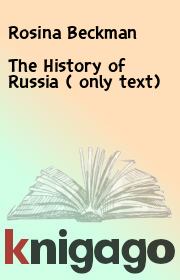 |
| Rosina Beckman - The History of Russia ( only text) Жанр: Старинная литература Год издания: 101 |
| Encyclopaedia Britannica - Russia Жанр: Старинная литература Год издания: 101 |
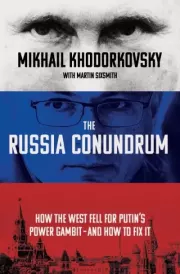 |
| Mikhail Khodorkovsky-ua - The Russia Conundrum - Mikhail Khodorkovsky-ua Жанр: Старинная литература Год издания: 2022 |
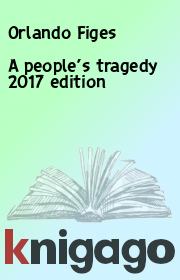 |
| Orlando Figes - A people's tragedy 2017 edition Жанр: Старинная литература Год издания: 101 |

